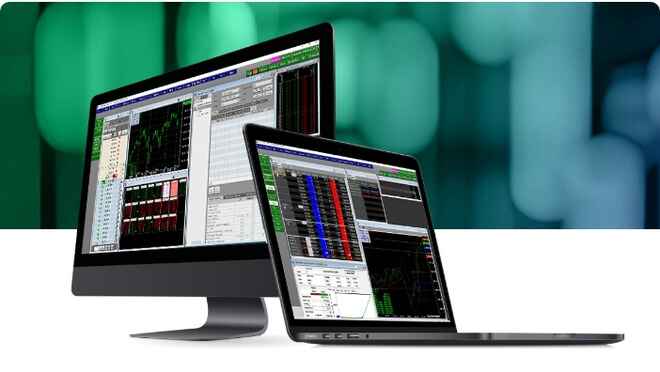| Course Sections: |
| Part 1: Introduction to Futures Trading |
| Part 2: Futures Trading 101 |
| Part 3: Who Trades Futures? |
| Part 4: Why Trade Futures? |
| Part 5: Basic Futures Trading Strategies |
Futures contracts are financial instruments focused on discovering the price of a specific commodity or asset at a specific time in the future—anywhere from tomorrow to years from now. Most often, though, futures traders are focused on price prospects over the next few months. In futures, as information about the supply and demand for the underlying asset changes over time, the price of the futures contract changes as traders take positions based on their opinion of what the asset’s price will be at that certain point of time in the future.
What is a Futures Contract?
A futures contract is an obligation to buy or sell specific quantity of a certain commodity or asset on a future date at an agreed upon price. Because the terms of futures contracts for each commodity or asset are standardized (i.e., same quantity, quality, delivery), they can be traded on an exchange. The only variable is the price. Today, futures contracts represent commodities and financial instruments you know and hear about in the news every day, including oil, corn, gold, popular stock indices and foreign currencies.
How Futures Trading Works
Futures trading occurs on federally regulated exchanges, which facilitate the place where buyers and sellers trade as well as post-trade clearing. In the United States, futures trading began in the mid-1800s as a way to bring together producers and users of grains and cotton. Today, the CME Group in Chicago is the largest futures exchange in the world; its stock is listed on the New York Stock Exchange.
In futures trading, the buyer and seller create a new contract with each trade, and the number of contracts that can be created is limitless. In contrast, a limited number of shares of stock are available to trade for each company that is publicly listed and traded.
Remember, it’s a “futures” contract. You are taking a position on what you think the price of something will be on the date the contract expires. If you’re trading crude oil and you believe the future price of oil will be higher, then you would buy the contract. If you believe the future price will be lower, then you sell the contract.
What is Margin?
Margin is essentially a good-faith deposit. It represents a small percentage of the total dollar value of the contract you have agreed to buy or sell at a future date. There are two types of margin. Initial margin is the amount of cash (or equivalent) you must have in your account at the time an order is placed. Maintenance margin is the dollar amount that must be maintained in the account to continue to hold the futures position.
Margin Call – A margin call occurs when there is not enough cash in the account to cover all the maintenance margin required to hold all the positions in the account. It is a call for money. A margin call generally occurs when prices move against your positions. Many experienced traders view a margin call as a red flag that their trading strategy might be flawed. Market conditions permitting, brokerage firms might allow up to five days to meet a margin call, even though they are due payable before the next trading day begins.
Expiration and Delivery
An important aspect of trading futures is understanding that futures contracts ultimately expire and cease to exist. On the expiration date, futures contracts may call for physical delivery of the commodity, while others are settled in cash. But, don’t worry. When you make a futures trade, you don’t need to make or take delivery of the commodity. In fact, if you’re like the vast majority of futures traders, you will offset your position long before ever being faced with the delivery process.
To close out a position in a futures contract, and avoid delivery, you offset the contract by taking an equal, but opposite, position in the same contract month. Thus, if you were long a futures contract (i.e., having bought a contract), you would sell a matching contract; if your initial position were a sale, you would buy to offset it. Either of these actions exits your position and gets you even.
Counterparty
Once you have a position in a futures contract, that contract is cleared and held at a clearinghouse, which ultimately is your true counterparty so that you may exit the position at any time. The futures exchange clearing corporations handle this process automatically.
Trading Symbols
In futures trading, each commodity has its own symbol, e.g. “C” for corn or “ES” for the E-mini S&P 500. However, each market might have more than one symbol to represent contracts trading on different exchanges or on different platforms, e.g. trading pit or electronic. For example, wheat in the Chicago Board of Trade trading pit is “W,” but is “ZW” on the CBOT’s electronic platform and “KW” on the Kansas City Board of Trade.
Your RJO Futures Senior Market Strategist can help you find the contract symbol for the product, exchange and platform you wish to trade. Each commodity contract has an expiration month that also is abbreviated by symbol:
| Contract Month Symbols | |
| January | F |
| February | G |
| March | H |
| April | J |
| May | K |
| June | M |
| July | N |
| August | Q |
| September | U |
| October | V |
| November | X |
| December | Z |
Price Quotes
Futures contracts are not all priced in dollars and cents, with a handy decimal point and two numerals behind it. So, it is important to understand how the market you are trading is quoted. For example, the grains have minimum ticks of quarter-cents while T-bonds are priced in 32nds, sugar in points based on the contract size and some stock indices in multiple-point increments.
Your RJO Futures Senior Market Strategist can explain how the markets are priced and how to decipher a quote on the quote system you are using. For example, a corn quote might read $4.2525 for $4.25 and ¼ cents per bu., or it could be listed old-school as 4252, where the last digit represents 2/8 of a cent, or ¼ cent. Note that the opening price is generally the midpoint of the opening range, or a single price designated by the exchanges. The end-of-day value of a futures contract used to determine margin calls is called the “settlement” price. Settlement prices are determined by exchanges based on closing prices.
Volume
Volume tells you how many contracts traded hands in a particular contract or market. Total volume equals all contracts traded. (The purchase and sale of a single contract counts as one, not two.) Volume helps measure the strength of price movements.
Open Interest
Open Interest tells you how many contracts exist—are live or active—in the market at any given point in time. This is similar to the number of shares outstanding for a stock. The larger the open interest, the greater the liquidity (i.e., ease with which you can enter or exit the market).
<Back– Part 1: Introduction to Futures Trading Next – Part 3: Who Trades Futures? >


